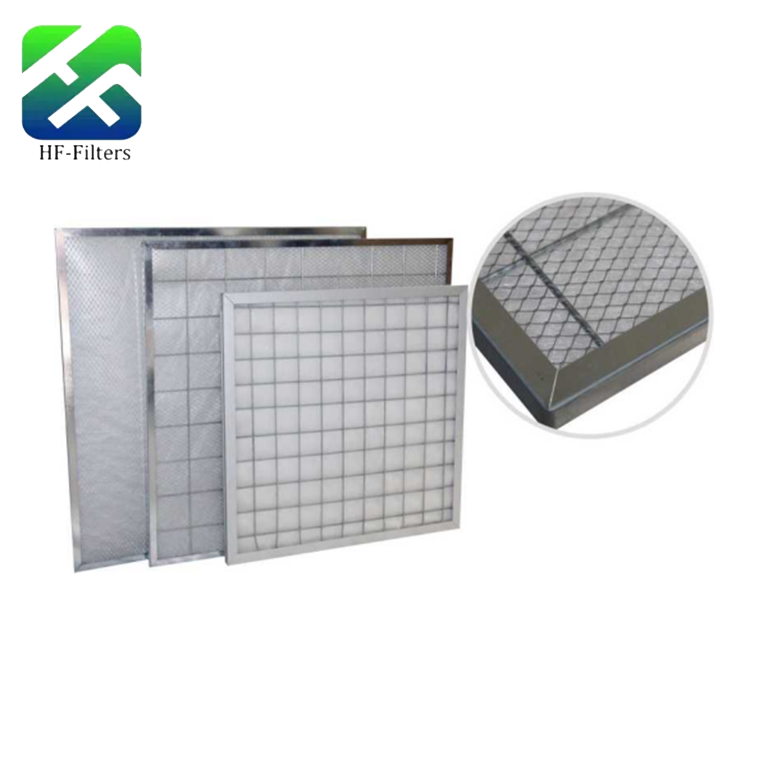With more and more pollutants in the air these days, air filters have really become a necessity—after all, they trap those harmful tiny particles and pollutants in the air, which is pretty good for our health. But picking a filter isn’t just grabbing any one off the shelf; there are two key things you need to figure out: one is its filtration efficiency rating, and the other is how small the particles it can catch are. Let me break down the common types of filters for you, talk about their respective efficiencies and what they can filter out, so you can pick the right one for your home or workplace.
Primary Filters: Great for Basic Filtration of Large Particles
Primary filters are like the “first line of defense” in air purification—they mainly catch those big particles you can actually see with your eyes. Usually, their efficiency is labeled as “Class G,” and they’re designed for particles between 5 and 10 micrometers. Think things like that fluffy dust you find around the house, the thick lint from clothes, or the coarse dust floating around in factories—this filter can block all of those.
But don’t expect it to purify the air super well. It’s more for places that only need simple filtration. Like factory workshops, storage warehouses, or as the “lead guard” in a multi-layer filtration system—catching the big particles first so the more advanced filters behind it don’t have to work as hard, and last longer too.

Medium-Efficiency Filters: Want Cleaner Air? This One’s a Solid Choice
If you feel a primary filter isn’t filtering enough, a medium-efficiency filter steps things up a notch. Its efficiency rating is “Class F,” and it can handle smaller particles—around 1 to 5 micrometers. Stuff like fine dust that you can’t see but triggers allergies, pollen, and even some mold spores—this filter can trap all of those.
This type of filter works well in places that care about air quality but don’t need it to be perfectly clean. Like hospital waiting rooms, school labs, the filters used in office HVAC systems, or crowded places like malls—medium-efficiency filters are a good fit here.

HEPA Filters: Need Super Clean Air? This Is a Must-Have
HEPA filters (short for High-Efficiency Particulate Air filters) are way more professional—their filtration power is way stronger than primary or medium-efficiency ones, with an efficiency rating of “Class E.” They’re specifically designed to catch really tiny particles—nothing between 0.3 and 1 micrometers gets past them. Think pet dander, bacteria in the air, smoke particles from secondhand smoke, even some viruses—this filter can trap all of these.
In places where air cleanliness is super important, HEPA filters are non-negotiable. Like hospital operating rooms, sterile cleanrooms in pharmaceutical factories, homes with people who have asthma or allergies, or labs that handle sensitive materials—you can’t go wrong with a HEPA filter here.

ULPA Filters: Need Ultimate Cleanliness? This Is the Top Choice (Quick note: Some people used to call them “ultra-high-efficiency filters,” but that’s not correct— the standard name is ULPA)
ULPA filters (short for Ultra-Low Penetration Air filters) are the “top-tier” of filters—their filtration performance is the best you can get right now. Their efficiency rating is “Class H,” and they can catch even smaller particles—only 0.1 to 0.3 micrometers. Things like fine dust from semiconductor production, tiny biological particles, or micro-impurities in high-end manufacturing—this filter can block all of these.
You’ll usually only find these filters in places with “strict” air quality requirements. Like microchip factories, biotech research labs, or nuclear research facilities—even a tiny speck of dust in these places could ruin experiments, mess up production, or even cause safety issues, so ULPA filters are a must.

How to Pick the Right Filter for Your Home/Workplace?
The key is to match your space’s needs with the filter’s efficiency and the size of particles it can catch:
For places with low filtration needs (like warehouses or factory workshops): A Class G primary filter is all you need.
For places that need medium filtration (like offices or school labs): A Class F medium-efficiency filter works perfectly.
For places that require high air cleanliness (like hospital operating rooms or homes with allergy sufferers): You’ll need a Class E HEPA filter.
For places with extreme air quality demands (like microchip factories or biotech labs): The only option is a Class H ULPA filter.
Picking the right filter isn’t just about making the air cleaner—it also protects our health and keeps your home or workplace running smoothly.
Hope this guide helps you make sense of filter ratings and particle sizes, so you don’t feel confused when choosing one. If you have any more questions, or if you’re not sure which one is right for your space, feel free to ask me anytime!

